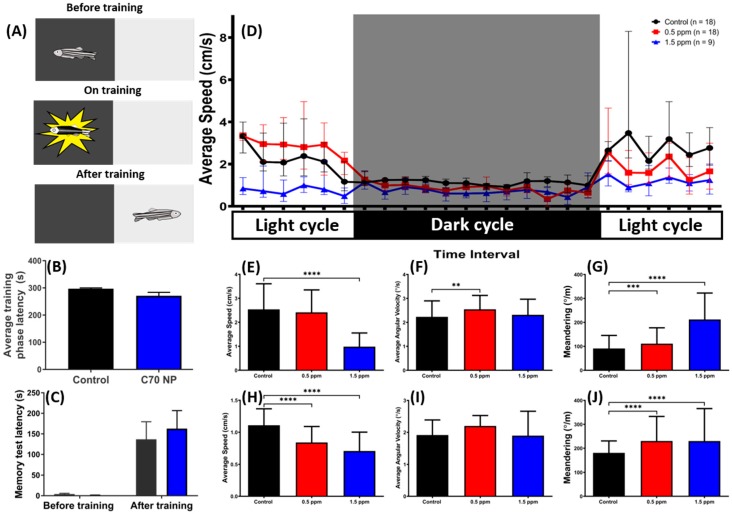Figure 6.
The short-term memory and circadian rhythm assay for the untreated control and C70 NP-exposed fish after 7- and 21-day exposure, respectively. (A) Schematic showing the experimental protocol for the passive avoidance test. (B) The average training phase latency on zebrafish learning. (C) The memory retention latency for the memory test. The data are expressed as the mean ± SEM and were analyzed by two-way ANOVA with Sidak’s multiple comparisons test as a follow-up test (n = 10 for the untreated control; n = 6 for the C70 NP-exposed fish). (D) Comparison of time chronological changes of the average speed between wild-type and C70 NP-exposed fish in the day and night cycle. The grey area shows the dark period and the unshaded area is the light period. Comparison of (E) average speed, (F) average angular velocity, and (G) meandering at light period. Comparison of (H) average speed, (I) average angular velocity and (J) meandering at the dark period. The data are expressed as the median with interquartile range and were analyzed by Kruskal–Wallis test, with Dunn’s multiple comparisons test as a follow-up test (n = 18 for the untreated control; n = 18 for 0.5 ppm C70 NP-exposed fish; n = 9 for the 1.5 ppm C70 NP-exposed fish; *** p < 0.001, **** p < 0.0001).

